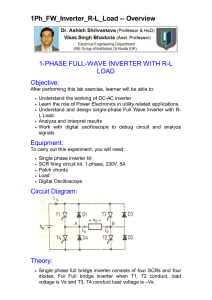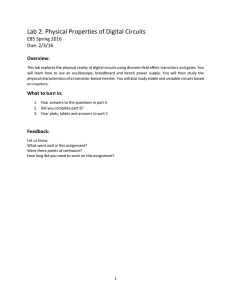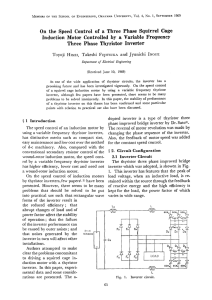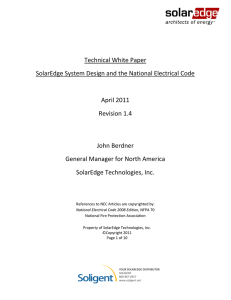1Ph_HW_Inverter -- Overview 1-PHASE HALF WAVE INVERTER
advertisement
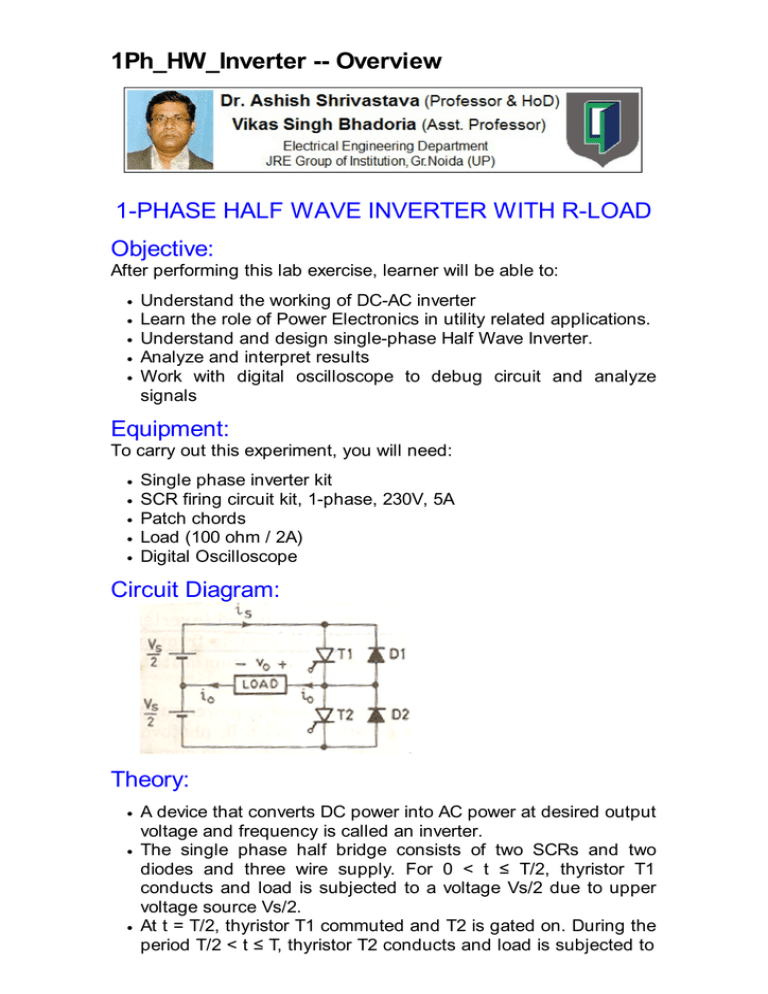
1Ph_HW_Inverter -- Overview 1-PHASE HALF WAVE INVERTER WITH R-LOAD Objective: After performing this lab exercise, learner will be able to: Understand the working of DC-AC inverter Learn the role of Power Electronics in utility related applications. Understand and design single-phase Half Wave Inverter. Analyze and interpret results Work with digital oscilloscope to debug circuit and analyze signals Equipment: To carry out this experiment, you will need: Single phase inverter kit SCR firing circuit kit, 1-phase, 230V, 5A Patch chords Load (100 ohm / 2A) Digital Oscilloscope Circuit Diagram: Theory: A device that converts DC power into AC power at desired output voltage and frequency is called an inverter. The single phase half bridge consists of two SCRs and two diodes and three wire supply. For 0 < t ≤ T/2, thyristor T1 conducts and load is subjected to a voltage Vs/2 due to upper voltage source Vs/2. At t = T/2, thyristor T1 commuted and T2 is gated on. During the period T/2 < t ≤ T, thyristor T2 conducts and load is subjected to a voltage (-Vs/2) due to lower voltage source Vs/2. Load voltage is an alternating voltage of amplitude of Vs/2 and of frequency 1/T Hz. The frequency of the inverter output voltage can be changed by controlling T. The main drawback of half-bridge inverter is that it requires 3wire DC supply The ideal waveform of the experimental setup is shown in Figure below: 1Ph_HW_Inverter -- Procedures Step 1 Precautions: A main switch should be included in whole circuit, so that in case of any emergency main supply can be disconnected from the circuit. Check all the connection before switching ON the power supply. Apply low voltages or low power to check the proper functionality of circuits. Load should be remained connected to the experimental setup for discharging the energy stored in the inductor or capacitor present in the circuit, if any. Don’t touch live wires. Step 2 Circuit Setup: Build the circuit as shown below: Step 3 Probe across load resistance (V_0) Step 4 Keep the multiplication factor of the CRO’s probe at the maximum position (10X or 100X - whichever is available) Step 5 Switch on the experimental kit and firing circuit kit. Step 6 Set the duty cycle to 50% Capture output waveforms on oscilloscope Step 7 Measure the RMS value of the output Take screenshot of output waveform. Step 8 Switch off the power supply and disconnect from the power source.



